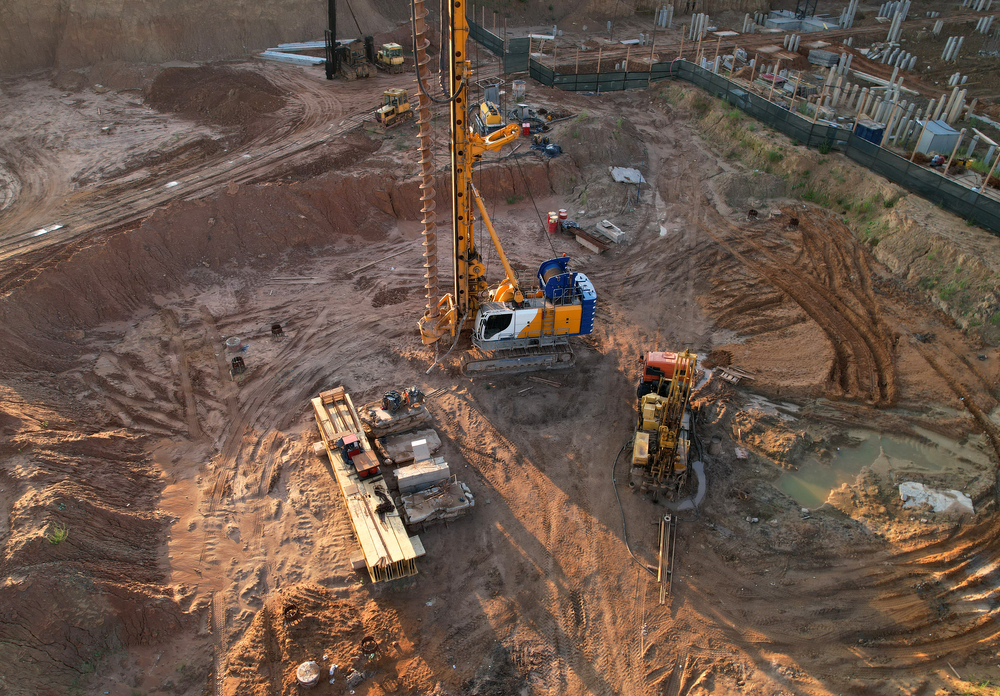The Single Strategy To Use For Geotheta
The Single Strategy To Use For Geotheta
Blog Article
Everything about Geotheta
Table of ContentsGeotheta for DummiesThe 7-Minute Rule for GeothetaLittle Known Facts About Geotheta.10 Easy Facts About Geotheta DescribedSome Known Details About Geotheta

They conduct site examinations, accumulate samples, carry out research laboratory examinations, and analyze data to examine the viability of the ground for building and construction tasks - Engineer of Record. Based on their findings, geotechnical designers give recommendations for foundation design, slope stability, maintaining frameworks, and reduction of geotechnical dangers. They team up with various other specialists, such as engineers, architectural designers, and construction groups, to ensure that geotechnical considerations are integrated into the overall project design and implementation
By evaluating the behavior and homes of soil and rock, they can identify potential geotechnical hazards such as landslides, dirt negotiation, or incline instability. Their experience aids protect against failings or accidents that can endanger lives and home. Right here are some comprehensive responsibilities and responsibilities of a geotechnical designer: Website Examination: Geotechnical engineers conduct site examinations to gather data on subsurface problems.
They interpret the data to understand the residential properties and habits of the dirt and rock, including their toughness, leaks in the structure, compaction features, and groundwater problems. Geotechnical Evaluation and Style: Geotechnical engineers examine the data gathered during site investigations to assess the stability and viability of the website for building and construction tasks. They execute geotechnical computations and modeling to assess variables such as bearing capacity, settlement, slope stability, side planet stress, and groundwater flow.
Get This Report on Geotheta
Structure Layout: Geotechnical engineers play an important role in designing structures that can safely sustain the designated structure. They analyze the soil problems and tons needs to figure out the suitable structure type, such as shallow structures (e.g., grounds), deep structures (e.g (https://www.cheaperseeker.com/u/geotheta)., heaps), or specialized strategies like dirt enhancement. They think about elements such as settlement restrictions, bearing capacity, and soil-structure communication to create ideal foundation designs
They assess building plans, display website activities, and conduct field evaluations to verify that the layout referrals are complied with. If unforeseen geotechnical concerns develop, they evaluate the scenario and offer recommendations for removal or changes to the layout. Danger Assessment and Mitigation: Geotechnical designers examine geotechnical risks and threats connected with the project website, such as landslides, liquefaction, or soil disintegration.

Partnership and Interaction: Geotechnical designers work carefully with other specialists associated with a task, such as designers, architectural engineers, and construction teams. Effective interaction and collaboration are vital to integrate geotechnical factors to consider into the total job design and building procedure. Geotechnical engineers give technical know-how, answer questions, and make certain that geotechnical requirements are fulfilled.
The Best Guide To Geotheta
Right here are some kinds of geotechnical designers: Foundation Engineer: Foundation engineers focus on making and evaluating foundations for structures. They examine the dirt problems, lots needs, and website characteristics to identify one of the most ideal structure kind and style, such as shallow foundations, deep structures, or specialized strategies like heap structures.
They review the variables affecting incline security, such as dirt residential or commercial properties, groundwater conditions, and slope geometry, and develop strategies to avoid slope failures and mitigate risks. Earthquake Engineer: Quake designers concentrate on examining and creating frameworks to stand up to seismic forces. They evaluate the seismic risk of a site, review dirt liquefaction capacity, and establish seismic design criteria to ensure the safety and security and strength of structures during quakes.
They do field screening, accumulate samples, and evaluate the accumulated information to characterize the dirt residential or commercial properties, geologic developments, and groundwater conditions at a website. Geotechnical Instrumentation Designer: Geotechnical instrumentation engineers concentrate on tracking and measuring the actions of dirt, rock, and structures. They mount and preserve instrumentation systems that monitor variables such as dirt settlement, groundwater degrees, slope motions, and structural variations to evaluate efficiency and supply early warnings of prospective problems.
See This Report about Geotheta
They perform tests such as triaxial examinations, combination examinations, straight shear tests, and leaks in the structure examinations to gather data for geotechnical analysis and style. Geosynthetics Designer: Geosynthetics engineers specialize in the style and application of geosynthetic products, such as geotextiles, geogrids, and geomembranes. They use these materials to boost dirt stability, enhance slopes, offer water drainage services, and control disintegration.
They often tend to be investigatory people, which indicates they're intellectual, reflective, and curious. They are curious, methodical, logical, analytical, and logical. Some of them are also social, implying they're kind, generous, cooperative, patient, caring, useful, compassionate, tactful, and friendly - Consulting Engineers.
In the workplace setting, geotechnical designers use specialized software application devices to execute estimations, develop styles, and analyze information. They prepare records, evaluation project requirements, connect with clients and team participants, and coordinate task activities. The office setup supplies a conducive setting for research study, analysis, and cooperation with various other professionals involved in the task.
3 Easy Facts About Geotheta Described
They frequently check out project websites to perform site examinations, assess geotechnical problems, and collect data for evaluation. These gos to entail traveling to various locations, occasionally in remote or difficult surfaces. Geotechnical designers may do dirt sampling, conduct tests, and display construction activities to make certain that the geotechnical aspects of the job are being implemented properly.
Geotechnical designers also function in specialized geotechnical research laboratories. In these facilities, they carry out experiments, do examinations on soil and rock samples, and examine the design homes of the products. Geotechnical research laboratory designers function extensively in these environments, dealing with testing devices, running tools, and recording data. They work together with other lab personnel to make sure exact and reliable screening results.
Report this page